ET2 iQ Pendant and Flush Mount Lamps (installation and review)
I purchased four ET2 lamps – Three pendant lamps consisting of one 24″ pendant and two 17″ pendant lamps, with the fourth lamp being a 17” flush mount lamp. I have been looking for lamps with this modern style for years. None of the lamps I’ve seen in the last few years had any smart connectivity or RGB capabilities. The lamps that I did find only had one color option and were very expensive, with some in excess of $1000.00. These ET2 IQ lamps were the first I’ve seen with this style, RGB color, and connected. As a bonus, they are part of the ‘Friends of Hue’ program, and as such, HomeKit compatible.
I have to thank Simon for posting the availability of these lamps . And with that, years of looking came to a swift end…. Thank you, Simon!
I ordered the 24″ ET2 iQ LED Pendant Lamp (E31256-BBK) first. That was shipped from Southern California via UPS. There were no issues with shipping and the lamp arrived within a few days in perfect condition.
The packaging of the lamp was very well done. It was apparent there was little chance that the lamp would be damaged en-route. In fact, all four lamps used the same type of packaging and all arrived with no damage of any kind.
My only critique of the packaging is that the Styrofoam packaging is not environmentally friendly, and there is a lot to dispose of. It would be nice for ET2 to use packaging that is recyclable, whilst still providing the same protection. I would happily have paid a few extra dollars to not have to deal with all of that Styrofoam. My trash comes once a week. It took me three weeks to finally get rid of all the Styrofoam. That was with the Styrofoam broken into small pieces and mixed in with my other weekly trash. If I wanted to get rid of it all at once I would have had to go to the dump and pay the fee for disposal there. Of course, I did purchase four lamps which came with the associated amount of packaging. Still, I hate throwing out Styrofoam because that stuff just doesn’t biodegrade. The boxes themselves are easily cut up and disposed of in recycling. The Styrofoam is my only critique of the packaging, but the lamp components are very well protected.
Upon unboxing the included components were the lamp and parts, two sheets of instructions, a small bag of standard hardware that included mounting screws, anchors, standard wire nuts, along with a pair of white cloth gloves to be used to protect the lamp during installation. I’m guessing this was for preventing finger oils and prints from getting on the lamp finish, but there was no mention of the white gloves in the instructions. The pendant lamps consist of four main parts. The large ring which is the main part of the lamp, the support cables, the mounting base, and the mounting bracket. The flush mount lamp is three main parts. The same as the pendants, just no hanging cables.
The mounting base contains the ‘Friends Of Hue’ receiver and LED processor module. Power comes into the lamp to this module. For the pendant lamps, the LED power and data is sent out of this module through one of the three support cables to the main lamp. The support cables are very long so the pendant lamps can be installed on very high ceilings. I measured these cables at about 96″ which is enough for ceilings as high as two stories. It was immediately apparent that these lamps are of high-quality. The construction of the lamp is of stainless steel, aluminum, whilst the inner lens/diffuser is acrylic. I will say that the stainless steel and aluminum finish is delicate and can be easily scratched. ET2 includes the white cloth gloves for installers to protect the lamp finish during installation.
INSTALLATION DISCLAIMER
A note to any would-be DIYers out there; This lamp is not designed for typical DIY jobs like many Hue or other common lamps are. This lamp is designed for professional installers or those with significant install experience only. The instructions include very basic install points and do not include some of the techniques one needs to know about in order to install this lamp. This is why I say that this is for professional/experienced installers. One needs to know how to install hanging ceiling lamps in order to successfully and safely install them.
Hanging lamps are awkward to deal with, especially if there is any significant distance the lamp will drop from the ceiling. The flush mount is easier to install since there are no cables, but I would still recommend hiring a professional electrician if you have not installed ceiling lamps before or are just unsure about this.
I have significant experience in installing many different kinds of electrical devices in homes, commercial installations, automotive, and aircraft applications. I’m an FAA certified Air Frame and Power Plant Mechanic and my rating in the US Navy was Aviation Electrician’s Mate. I flew and fixed aircraft for twenty years. Sometimes at the same time. I’ve repaired autopilot and other systems in flight, many times, so simple lighting installs in homes generally do not present a significant challenge to me. However, even with my experience, this install was still a challenge for me because of how awkward it is to deal with hanging lamps and how delicate these lamps are. The wiring is simple enough. I did scratch one of the 17″ pendant lamps. It was a small scratch in the stainless steel that is not really noticeable, except by me of course.
If you’re not comfortable dealing with mechanical/technical things or have seldom/never dealt with installing, removing, or working on electrical devices, then I highly recommend you call a professional electrician to have them install this lamp safely and correctly. These lamps are expensive compared to other HomeKit lamps, so you don’t want to attempt an install and then make a critical mistake that’ll render the lamp inoperative. If you’re not going to install the lamp yourself, you can skip the entire install review below and go straight to the product review. In fact, most of you can do that now and if you decide you want to buy and install this light, then you can save this article for that time as a reference.
PART 1A – PENDANT LAMP INSTALLATION
The following techniques are what I came up with that work for me. You may find better techniques than this and if so please feel free to share your techniques and ideas, as I could always learn a few new things myself.
One of the first things that needs doing is to determine the length of the support cables and adjusting the cables themselves. This is one of the more involved processes of this install. There is no cable adjustment in the large part of the lamp or the ring. All the support cable adjustments are made inside the mounting base. Each cable is adjusted individually so the base can be easily mounted on sloping ceilings. The inside of the mounting base has plenty of space to accommodate all of the excess cables when wrapped and tied in a reasonable manner. Very well designed!
The following is a discussion of measuring and adjusting the length of the cables. There are two methods used, with two separate devices to adjust cable length.
The first device is a plastic cable lock tie used for the first cable length adjustment, prior to installation. The second device is a grommet which has a spring-loaded cable lock used for the second adjustment method after the lamp is installed. I discuss both methods prior to installation so you will know what is involved when using the first method to adjust cable length and know how precisely you need to measure prior to installation.
The small plastic cable lock tie has three holes that are attached to the end of each support cable. It’s very simple to use. Just route the support cable through the three holes and that’s enough to keep it in place.
The grommet is designed to lock the cable in place when there is tension on the cable from the weight of the ring.
The spring-loaded grommet allows you to simply push the cable up into the mounting base to shorten the cable length. It works like a one-way check valve. The cable can be pushed into the mounting base through the grommet and will not just simply slip back out. If you want to lengthen the cable by pulling the excess cable out of the mounting base you have to push the shaft of the grommet up and into the grommet housing.
The spring-loaded design of the grommet allows you to fine-tune the length of the cable with the base completely mounted. You don’t have to take the base off to fine-tune the length of each cable like I did, until I figured the grommet design out.
You simply push the center shaft of the grommet into the mounting base and that will release the internal cable lock. The grommet shaft will push into the grommet housing about an eighth of an inch. While you are holding the grommet shaft in with one hand, you can extend the support cable with the other by pulling the cable out. Keep in mind that you will only be able to pull the cable out by the amount of slack you have left inside the base with the plastic lock tie.
The photo of the plastic lock tie above shows that I left no slack to extend the cable, but even without slack you can still push the cable in and then pull it back out to level the ring. If you need to be precise with the height it’s best to leave yourself a little slack with the lock tie to fine-tune the length of the cable using the grommet.
It took me a little while to figure out how the grommets work and that they have the capability to fine-tune the length of the cable. That design was not in the instructions. I did dismount the base a few times to adjust the cable length before I figured out how the grommets worked. Lesson learned. The function of the grommets was not in the instructions.
The plastic cable tie also serves as a backup if the internal lock inside the grommet fails or sticks in the unlocked position. It will prevent the cable from slipping through all the way and your lamp from falling, at least partially.
I recommend practice adjusting the length of the cable using the grommet prior to installation so you can get a feel for how the grommet operates, and also make sure the grommet is operating with no issues.
The lamp is shipped with the support cables fully extended and they are quite long. Over 96″.
MEASURING
I just used a tape measure and measured down from the ceiling to get a rough idea of what height I wanted the ring to be and the length of the drop from the ceiling.
For the 24″ pendant lamp that I installed in my dining room with a ten-foot ceiling, I used a 21″ drop. The ring has a 4″ height so it will drop down another 4″ below the length of the cable. That’s a total of about 8ft off the floor.
You want to get the length as close as you can so that when you adjust the cable using the grommets you won’t have to adjust as much. I recommend trying to be within an inch or two and leave enough slack in the plastic cable tie for fine-tuning using the grommet. About an inch of slack should do if your first measurements are pretty close.
Once the mounting base is installed, you can fine-tune the length by extending or retracting the support cable through the grommet. For small adjustments that will not be a problem, but for larger adjustments, you may have to remove the mounting base and readjust the cable length using the cable lock ties. That’s going to depend on how precise you want the height of your lamp. For me, if I was within a few inches of what I wanted, it was good enough and all I had to do was level the ring.
Once your first measurements are done and the support cables are adjusted using the plastic tie, you’re ready to hang the lamp.
The wiring is pretty standard. An 120-volt black wire, a white neutral, and a bare ground. If you’re not sure about how this wiring is connected, STOP, call a professional electrician. This install is not for you. For this reason, I’m not discussing basic home wiring. It’s standard wiring for any ceiling lamp. If you haven’t done any of that then don’t start now. Call an electrician and if you really want to install lamps or other electrical devices go get some training where it’s safe to learn so you won’t kill yourself or anyone else.
Continue you say? Okay, do so at your own risk. Just make sure you power down the circuit before you attempt to connect or disconnect any wires. Do I have to tell you that? If you didn’t already know that, go hire a professional electrician for your own sake…
The mounting bracket for the mounting base installs on a standard ceiling junction box using two standard screws. The bracket has many different mounting options and is one of the better mounting brackets I’ve installed. There are three outlying supports extending laterally from the center round section of the mounting bracket. These outlying supports are designed to give support that is in addition to the ceiling junction box. The diameter of the mounting base is larger than a standard ceiling junction box so the mounting bracket is larger to accommodate that.
On the 24″ pendant lamp I hung in my dining room, I used anchors and screws to mount two of the three outlier supports. For the third outlier support, I used a sheetrock screw, as there was a wooden stud in that location. That mounting bracket is very secure.
On my two 17″ pendant lamps that I hung in my stairwell, I did not use the outlying supports. This was because I mounted these lamps on existing recessed lamps built into the ceiling. I used recessed lighting adaptors available at Home Depot to convert the recessed ‘can’ lights into non-recessed ceiling lights. Those adaptors provided very strong support so the outlier support was not needed in my opinion, nor was there any place to screw those outlying mounts into, as there was only empty space where the 6″ can was. The 17” pendant lamps are also lighter than the 24” pendant. The mounting base of the three ET2 hanging lamps are about eight inches in diameter so the former 6″ holes of the recessed can lamp were covered up nicely.
Once the mounting bracket is installed things get a little tricky. The lamp is awkward to deal with since it is hanging on support cables. The main part of the lamp can swing about and bang into things which will damage it. Easily. I did put a small scratch on one of the 17″ pendant lamps, but that scratch is only visible if you’re looking right at it very close.
As I said earlier, these lamps are delicate and require very careful handling. They can easily get scratched and dented. Especially if they are swinging around. For the 17″ pendant with the 81″ drop, I wrapped the entire lamp in packaging to protect it whilst I installed it. This proved a very good technique as there was no way for me to hold the ring and install the mounting base at the same time. I was by myself at the top of a very tall ladder. I minimized the movement of the handing ring but it was still rubbing against the ladder I was on. Because of the protection I placed on the lamp, it was not scratched or damaged in any way. So that worked.
It makes it easier to have someone help you hang the lamp. That may not always be possible depending on the location of the install. For one of my 17 ” pendant lamps, the drop was 81 inches because the ceiling was on the second floor and the stairs going from the first to the second floor have an open ceiling at that point. There is only room for one person on the ladder which was extended quite a bit. This was the most difficult and dangerous install for me. It was a long way down to the first-floor landing so I was taking my time and being very careful.
See that window in the image above? The sill provided a good ledge for tools and parts. You’ll need to accommodate for things like that on the top of a tall ladder.
The photo below is of the tools I used to hang the lamp. The bottom piece is a 3″ length of wire coat hanger I bent into a hook at both ends. The other three are for aligning the screw holes of the base to the mounting bracket and then holding the base in position to support the weight of the lamp.
The hook supports the lamp by providing a temporary place to hang the lamp while you connect the wiring. The awl and screwdrivers are used because they are thin enough to fit into the mounting bracket screw holes without damaging the threads. They will hold the base in position while I insert the long screws (not included).
It will help greatly to get three long screws that will screw into the three mounting bracket screw holes for the base. These will help when it’s time to insert the three included short mounting base screws. You can use the standard screws found to mount any wall receptacle or switch to wall junction boxes. Those upper and lower screws have threads that match and they are long. More on using those below.
These techniques are not included in the instructions but some of them are common with any hanging ceiling lamp. You may have a better technique and better tools, but this is what I used so you can get the idea.
Use the hook to support the weight of the lamp while you are connecting the wiring. I hung the hook in the mounting bracket screw hole and then I hung the mounting base on the other end of the hook through one of the three screw holes. That’s pretty standard practice when hanging lamps.
You can see in the photos how well this works. At that point the wire connection was easy.
Once the wires are connected, the next task is to support the mounting base with the mounting screw holes in the mounting bracket and the ensure the mounting base is aligned. This can be very difficult if you try to hold the mounting base in place while trying to thread one of the included screws for that purpose.
Trying to get a visual sight of the mounting screw position while holding the weight of the lamp and then threading the mounting screw is going to be very difficult. The screw hole in the mounting bracket is the same exact color as the mounting base making it very difficult to see unless a bright light is pointing directly into that hole so you have a good visual angle. Even if you manage to get the holes aligned it will only be for a brief period because you are holding the weight of the lamp. The lamp has enough weight to cause your hand to be unsteady, so alignment will be almost impossible.
That’s a lesson I learned in the past. The hard way of course.
One technique you can use to get a better visual picture of alignment between the mounting base screw hole and mounting bracket screw holes is to place a piece of light-colored tape on the mounting bracket screw hole. Light yellow or white masking tape or a bright-colored piece of electrical tape will do. Any color that contrasts with the color of the mounting base should work. Then just make sure the screw hole is clear so the tape does not fowl the mounting threads. That will give you a better picture of hole alignment.
You can do this prior to installing the mounting bracket on the ceiling. Practice fit the mounting bracket and base with each other before installation to get an idea of the fitment and alignment. That will make it easier when the mounting bracket is on the ceiling. If you used light-colored tape you’ll see that it’s easier to determine screw hole alignment. I used the two small and thin screwdrivers along with the awl to align the holes and hold the base in position.
The three included mounting screws are small and awkward making it very difficult to just try and screw the mounting base into the mounting bracket. The awl and screwdrivers really help here. Just insert all three tools into all three holes and those holes will be fairly well aligned.
Now that the mounting base is in position and the weight of the lamp is supported by the three tools inserted in the mounting screw holes, support the weight of the lamp with your hand by holding it by one of the screw holes and then remove that tool from that screw hole.
Use the longer screw to thread the hole that is now empty. The longer screw is much easier to thread than the short screw and holds the base to the mounting bracket better than the three tools. Once you have two long screws in place the mounting base is going to be aligned laterally with the mounting bracket.
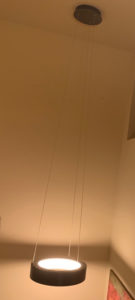 So now you have two long screws threaded and one tool in the third hole.
So now you have two long screws threaded and one tool in the third hole.
Now you can just remove the remaining tool and thread one of the included short screws. It will be much easier to thread the short screw since the hole will be mostly aligned. You just have to adjust the vertical height slightly by raising and lowering the base with your hand. Don’t fully tighten any of the mounting screws until all three of them are threaded.
Swap out each of the remaining longer screws with the included shorter screws one at a time. After all three of the included mounting screws are in, then tighten fully.
Once the base is secured and the mounting screws are tightened, check the level of the lamp and make any adjustments using the grommets as previously discussed. The photo here shows the 17″ pendant with the 81″ drop. It can drop to 96″.
I used a small bubble level to determine the level. I placed the level in several spots to see overall level. Adjust each cable length as desired using the grommets as previously outlined.
PART 1B – FLUSH MOUNT LAMP INSTALLATION
Installation of the flush mount 17 ” lamp is much simpler. Just install the mounting bracket, which is much larger than the other pendant mounting bracket. Because of the long outreach of the flush mount bracket arms, you will need to screw each arm into the ceiling using anchors with screws, or if there is a stud there, a sheetrock screw of sufficient length.
Hang the lamp itself since there is no base. Connect the wire, which is standard. I used the same coat hanger hook tool I made for the pendant lamps to hang the flush lamp so I could connect the wiring.
I also aligned the bracket mounting holes with the lamp mounting holes using the same tools I used for the pendants, using the same procedures. The diameter is just much bigger since there is no base, but the procedure is the same.
Install is complete!
ADDING THE LAMPS TO THE PHILIPS HUE APP AND HOMEKIT
This is a pretty simple process. As a Friends Of Hue lamp, you simply power on the lamp and open the Philips Hue app. If that app is already set up in your HomeKit system then all you need to do is add a new light. If you need to set up Hue for the first time then go through that process and come back here.
Serial number: You need it.
Once you have the Philips Hue app running, go to “Add A Light” and activate that function. You will need the six-character serial number which you’ve no doubt seen already on the top of the main lamp and inside the base. That serial number is also on the instructions that came with the lamp. On the “Add A Light” page of the Hue app there is a small line of text that is kind of obscure. It reads “Use Serial Number”. For most Hue lights you don’t need to do that, but for this light, you need to click on that option. Add the serial number then click on “Search”.
The lamp will blink off and on when the app finds the lamp. This usually takes about ten seconds. If it’s longer than that you’re probably going to have issues. Continue through the setup process. The Hue app will automatically add the lamp to your existing Homekit home and give you the option to select which home and room you want the lamp in. If you use those options you will find the lamp in the correct home and room the next time you open the home app. If you didn’t select the home and room options then the lamp will appear in the default home and in the default room. No big deal, just move it where you want to.
Pretty simple setup. The only critical point is to treat the serial number of the lamp as you would any Homekit code. Safeguard it and do not lose it. I would also back up the code using an app like HomePass or similar. If the code is lost then it will be difficult to get it back, if you can even get it back at all. The stickers included on each lamp are awesome, but if they come off or fade and you lose the instructions, the lamps will effectively brick and become dumb lamps if they revert to factory default.
Always back up your HomeKit codes. Consider it sacrilege to do otherwise. You’ll eventually thank yourself later for doing that.
PART 2 – REVIEW OF THE ET2 LAMPS INSTALLED
Simply put, these are the brightest and most color-saturated Homekit lamps I have. They are hands down the best performing lamps in my HomeKit home. From integration into HomeKit to connection reliability, to lighting performance, they are the best.
I was wondering if I was going to need a supplemental light for my dining room table because I thought that the 24″ pendent was going to be mostly accent lighting, but once I turned that lamp to full brightness it was obvious I wasn’t going to need anything else. It is bright to the point that it needs to be turned down. 50% is good for dinner. The brightest setting is too bright to just sit under at the table. So my worries were misplaced. I have no other lights that are as bright.
On the opposite side of the brightness scale, these lights are the best performing lights I have when it comes to dimming levels. Anyone using smart lights knows that when you get below about 10% brightness, most lights are pretty much the same brightness to the point they just turn off. Other lights have some issues when the percentage of brightness is in the single digits.
There is a clear difference in the ET2 light though, it will visibly step down through each 1% increment, all the way down to 1%. I have not seen that before in smart lamps. All four ET2 lamps have exactly the same performance.
Color performance is outstanding in all colors; Red, Green, Blue, Orange, Yellow etc. All colors are richly saturated and authentic. Additionally, when adjusting the color of all four lamps at once, all four of them match each other perfectly. There is no visible difference between them.
I have five third-generation Phillips Hue BR30 downlights in my kitchen and four more in the upper Foyer. Those Hue lights also have great color saturation (unlike earlier generation Hue lights) and the color fidelity with the ET2 lights is perfect. They match exactly for any position on the color wheel. I think that the ET2 lamps must use the same LEDs and LED controllers as the Philips Hue lights to achieve that. If that was not intentional it was a happy accident.
I would show pictures of color saturation but my camera is not capable of capturing that. No matter what color I set the lamp to the camera just shows it as mostly white with the reflections showing some of the color.
Connectivity of these lamps so far is perfect. None of them has shown up as “No Response” yet. As of this update to this article, there have been no connection issues at all. It has been over two months now.
The foyer is the room I have designated for the three ET2 17” lamps and four Hue BR30 downlights. They are all powered on the same circuit. I have a Lutron Caseta wall switch to control power to that circuit. I never use a dimmer on smart bulbs or lamps. A dimmer can cook the circuit of a smart light or lamp when the voltage drops by using the dimmer function. A HomeKit wall switch won’t do that because it is just on and off. It’s not possible to dim it and thus damage the circuits.
I use twelve Lutron Caseta wall switches to control power to smart bulbs or lamps throughout the house. Usually, those switches remain on all the time but sometimes you need to power cycle a smart bulb or lamp when it becomes unresponsive. Having wall switches controlled by HomeKit allows you to do that when away from home. Additionally, most people have other members of the household to consider. Some of them will inevitably turn off the standard wall switch to those smart bulbs when they leave or at various other times. Unless you have HomeKit connected switches like the Lutron Caseta or similar, those smart bulbs will stay powered down until you get home and turn them back on.
Lutron Caseta wall switches or other HomeKit wall switches alleviate all of that.
To control the Foyer lights directly, including the ET2 lamps, I installed and use two Hue Dimmer Switches. This is in addition to the Lutron Caseta wall switch. Since the smart dimmer is a Hue control device, it works flawlessly with the hue downlights and ET2 lights in the foyer. Pressing the power on (top button) on the Hue Smart Dimmer multiple times, cycles through several preset color settings. The color and brightness in all seven of the lamps in the foyer match perfectly. All of the lamps respond exactly the same with smooth dimming to off or transition to on or a color change. The operation is very well done.
Final note; These are not cheap light fixtures, but when you consider the build quality, attention to detail, along with the brightness and color accuracy, not to mention Hue and HomeKit compatibility, it’s hard not to love these lights, as long as you’re willing to invest.

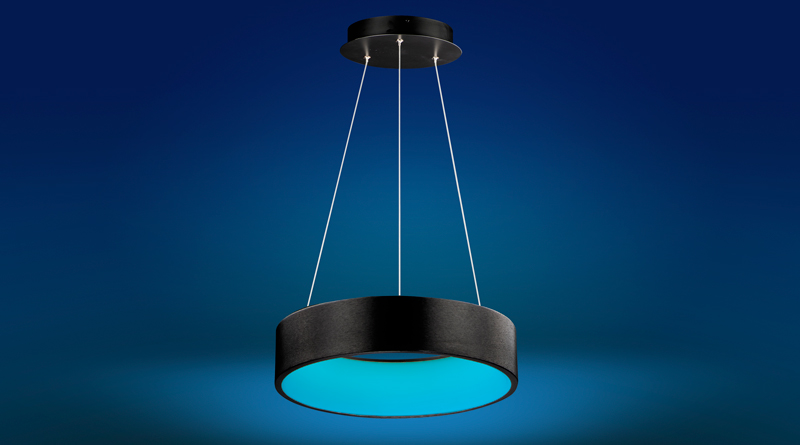
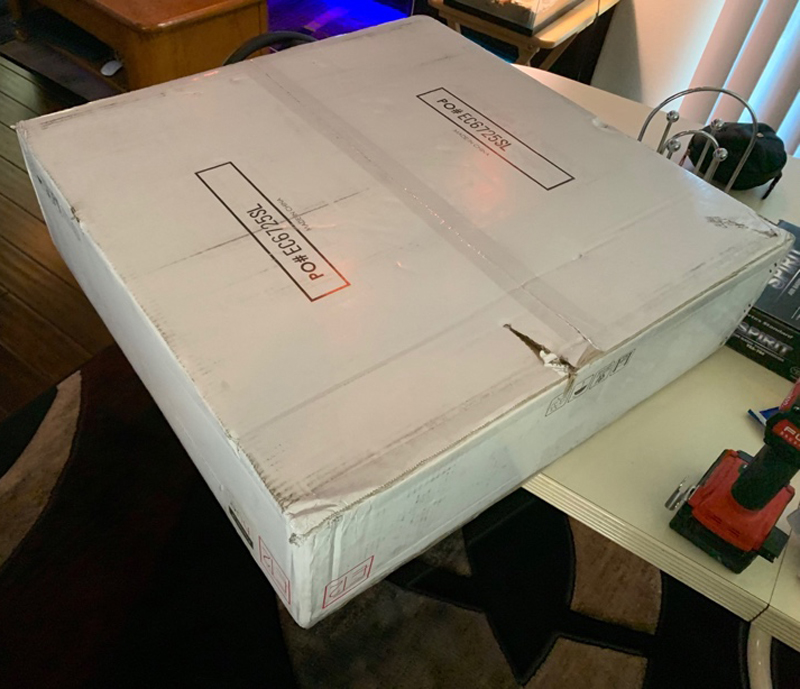
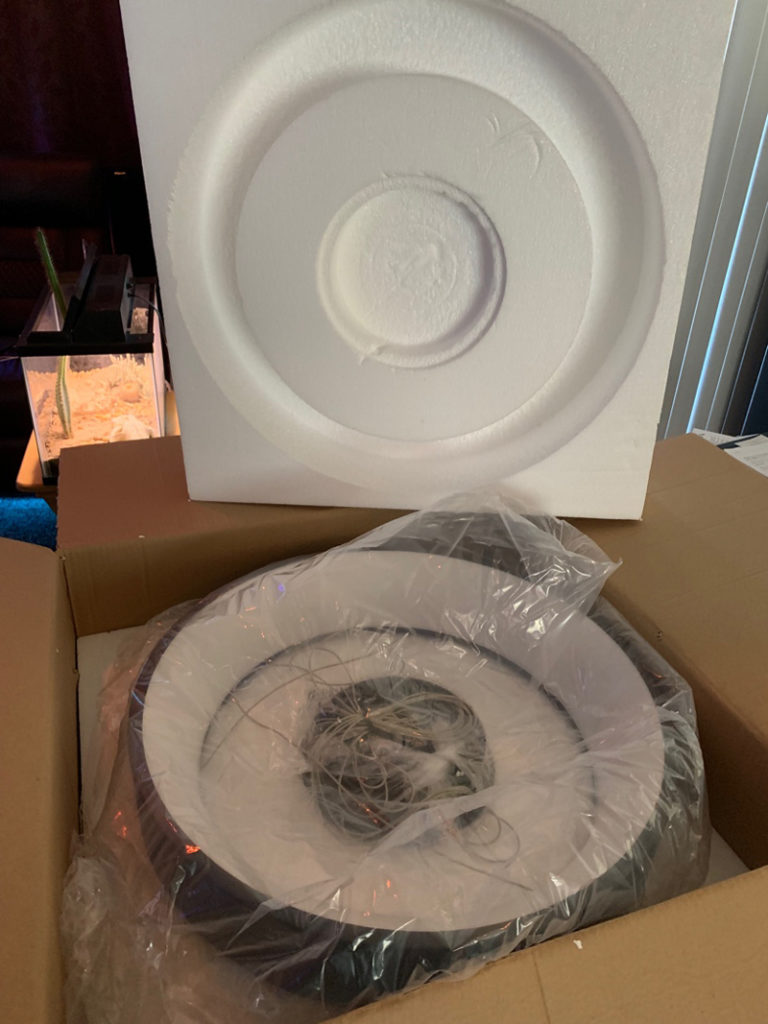

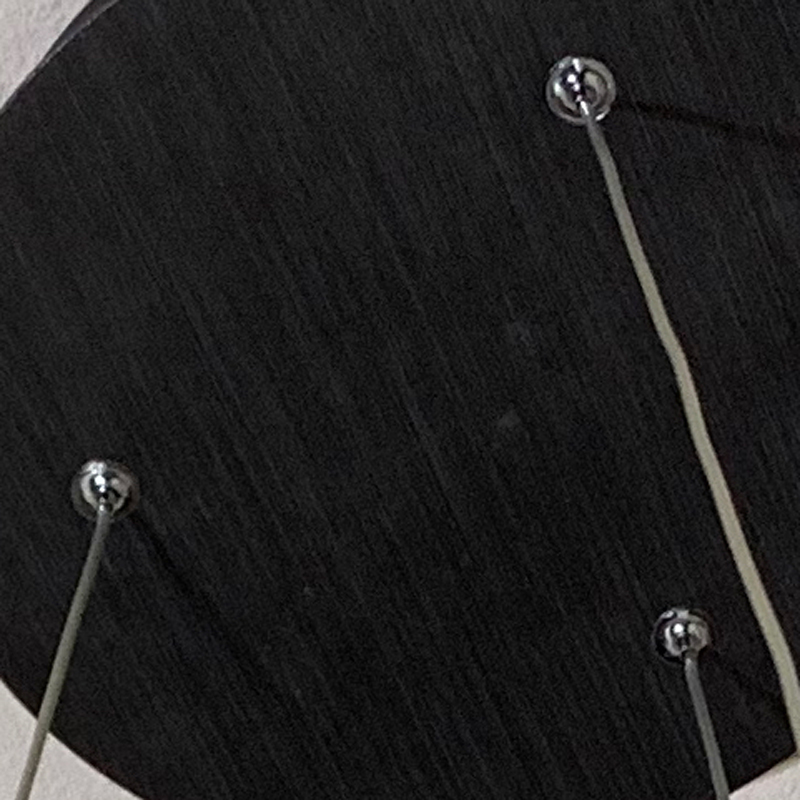



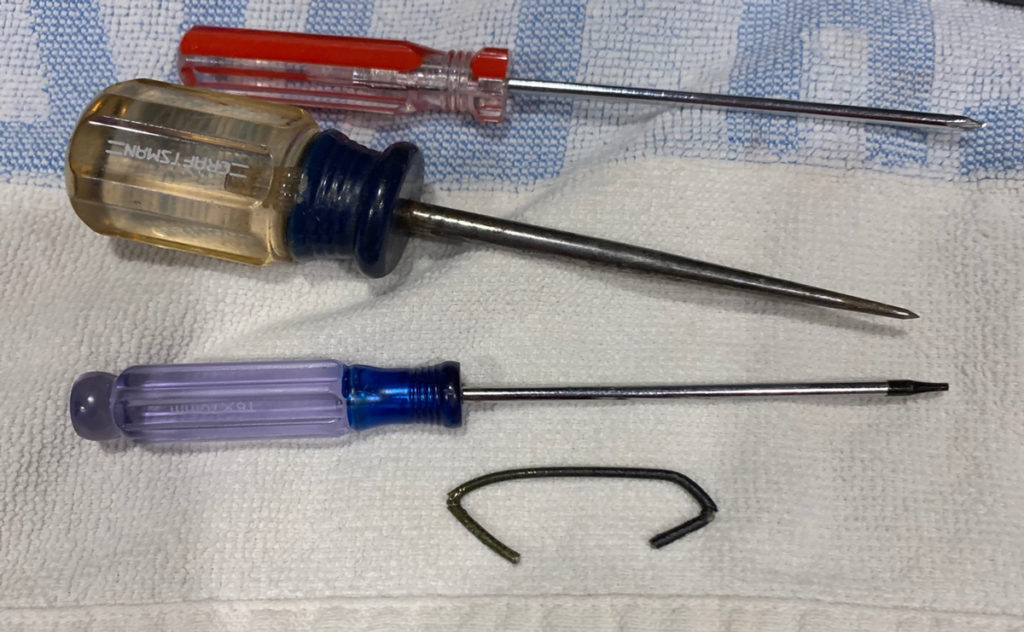

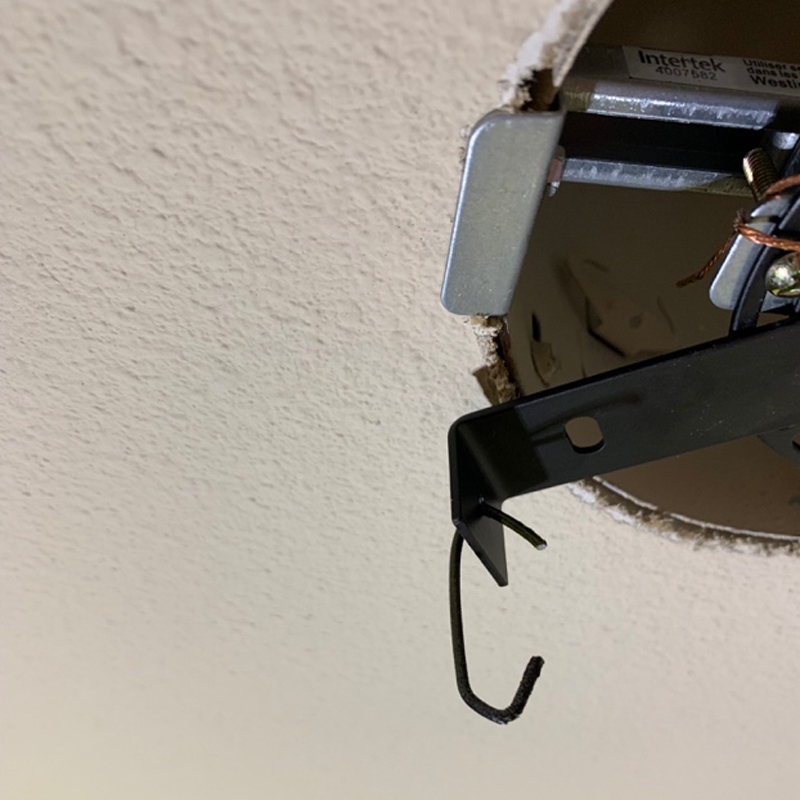


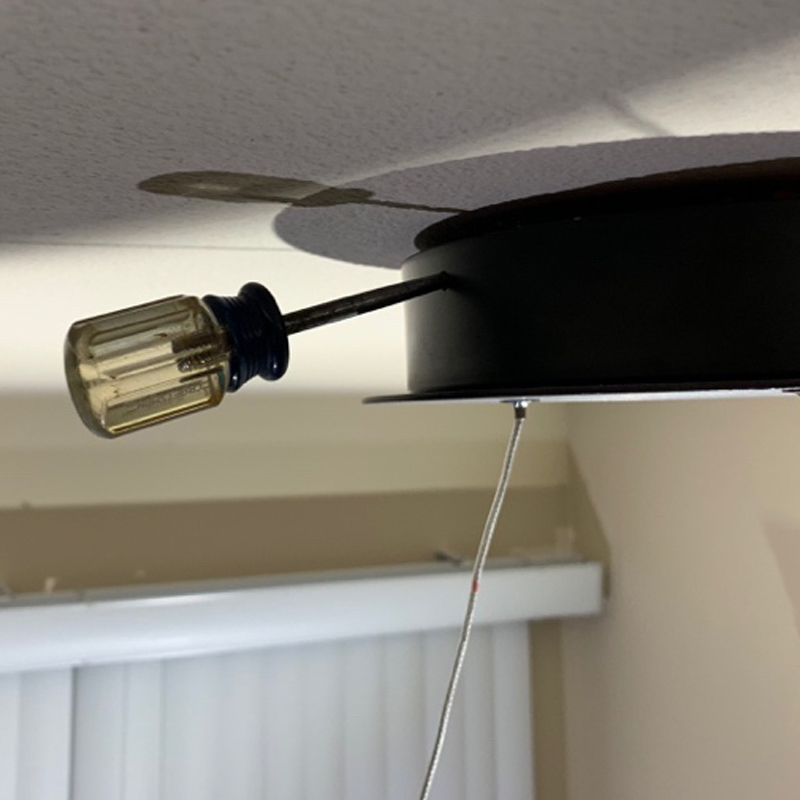
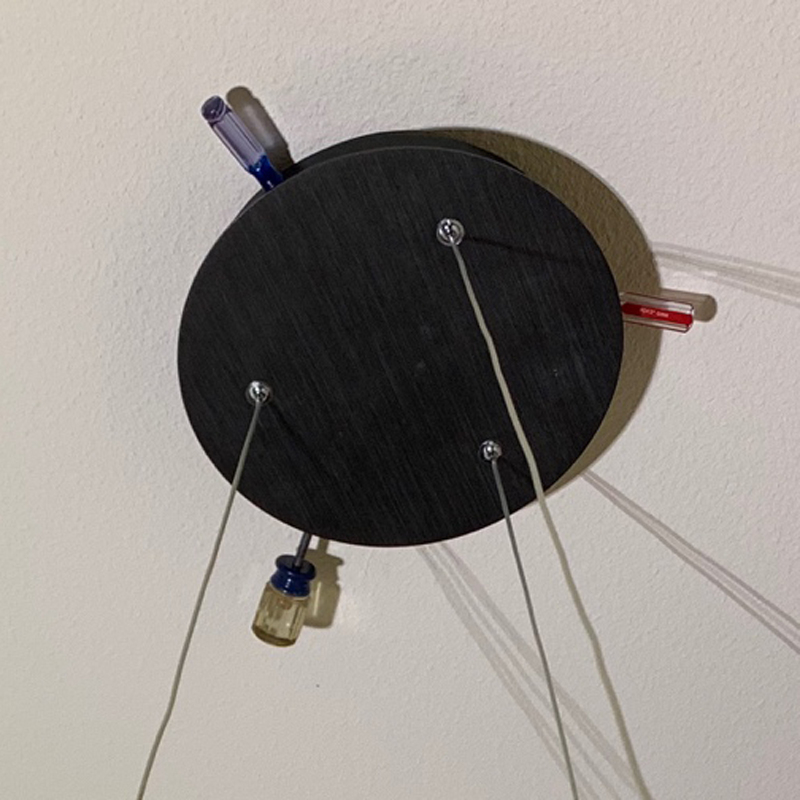

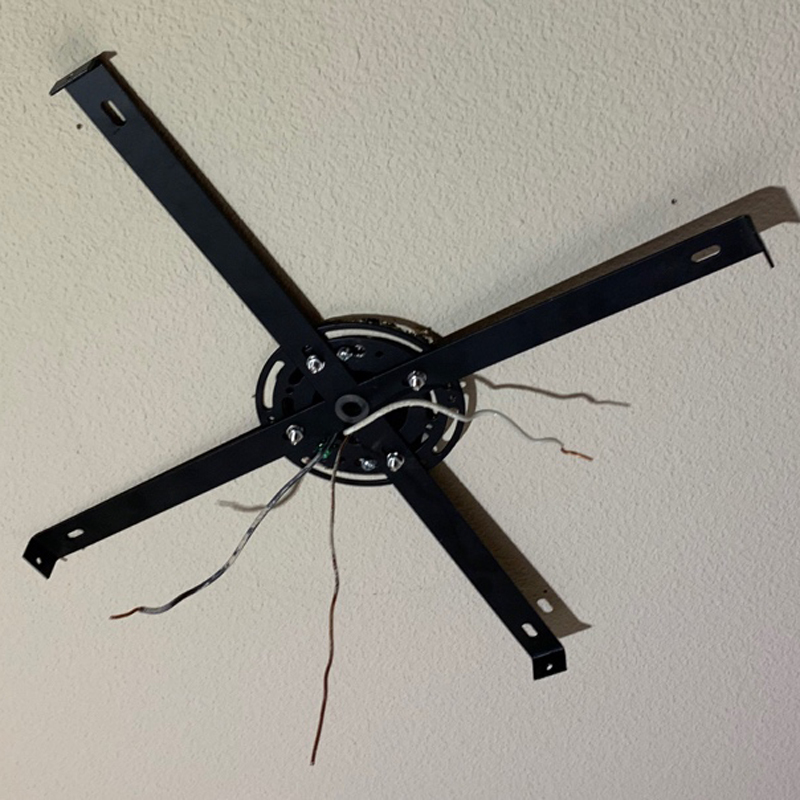
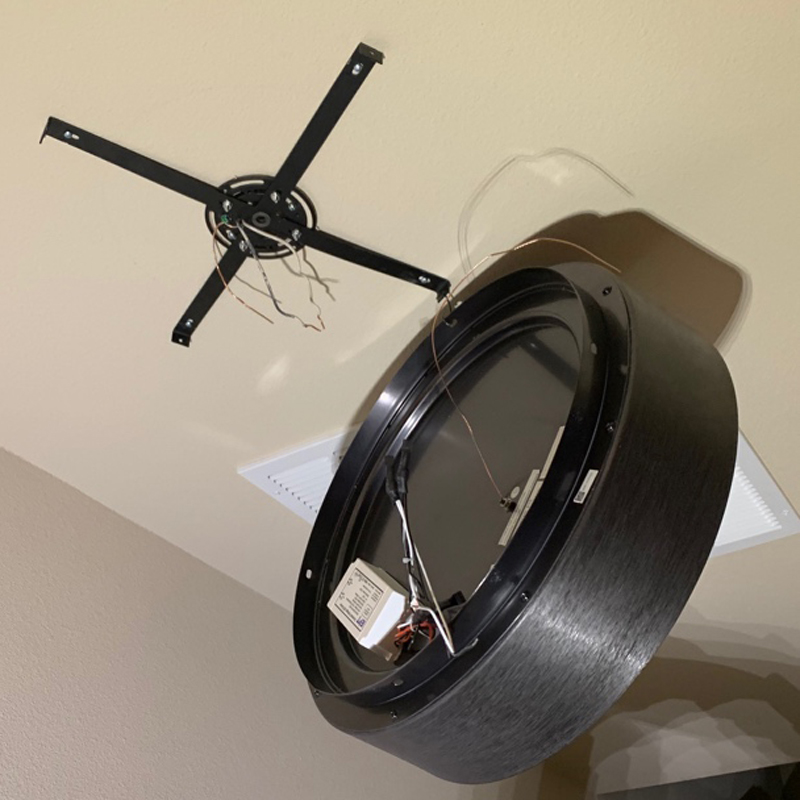
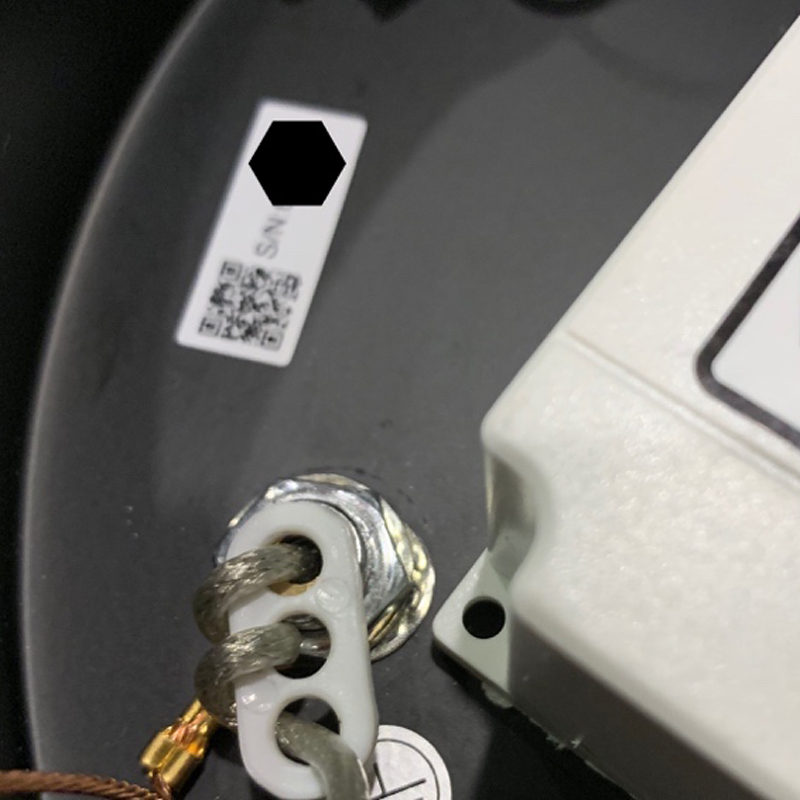

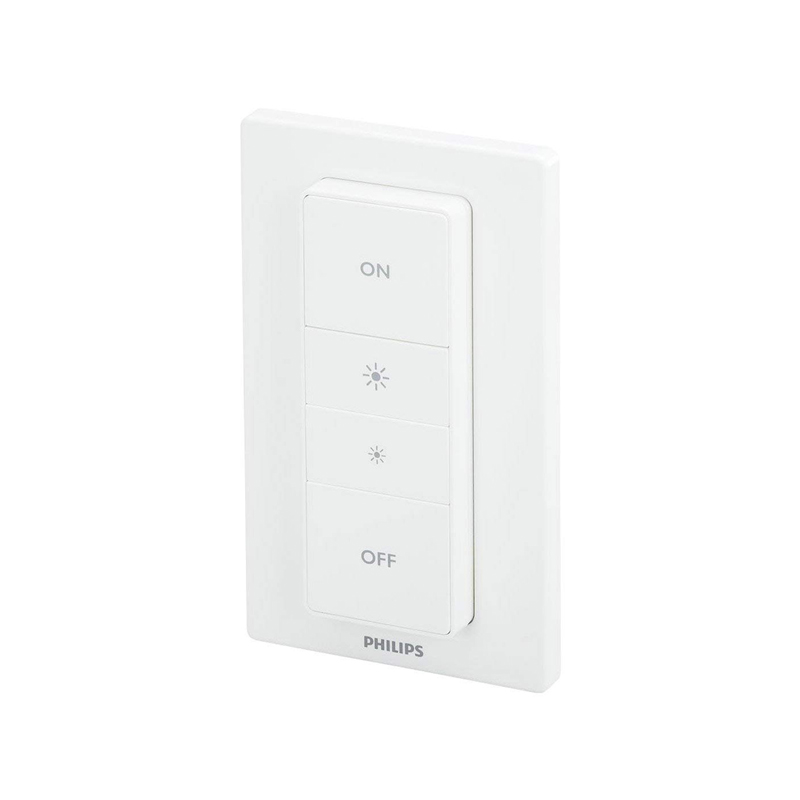
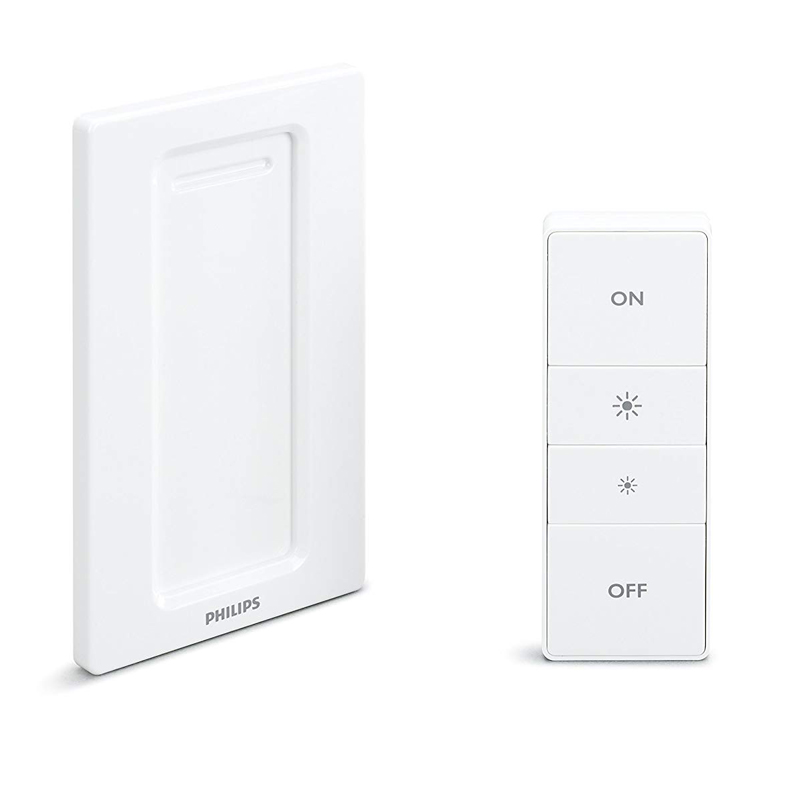
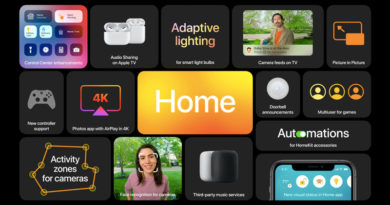
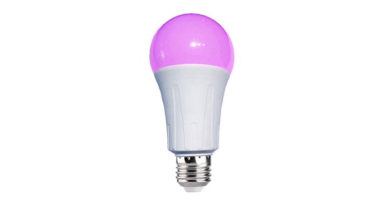
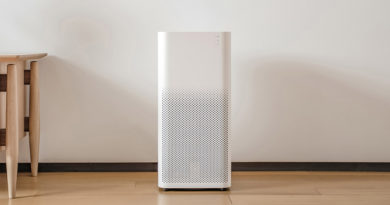
As of this article I still have had no issues at all with any of the ET2 lamps I installed. All of them work perfectly. Thanks for the great edit Simon!